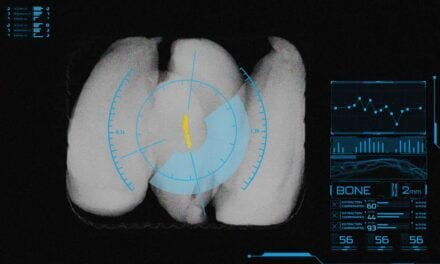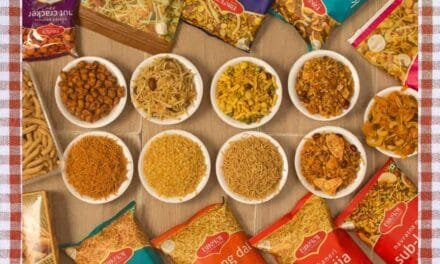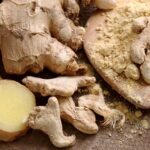Seizing Opportunities in the Flourishing Dal Milling Market with a Confident Approach. This article contains a detailed guide to starting a profitable Dal Milling Business, including an inspiring case study for aspiring entrepreneurs.
Embarking on a venture in the thriving dal milling industry can be a lucrative business opportunity. This guide aims to provide a structured and user-friendly approach to starting a profitable mini dal milling business in India. From market insights to project reports and licensing procedures, we’ve got you covered.
If you are looking to venture into the food processing sector, understanding the PLI scheme for food processing can provide you with vital insights and support mechanisms available for small businesses.
Essential Steps for Starting Dal Milling Business
Dal Milling – A Lucrative Venture
1.1 The Flexibility of Dal Milling:
Dal milling offers entrepreneurs the flexibility to start at any scale, making it accessible to a wide range of business enthusiasts. Whether contemplating a small-scale venture or a larger industrial operation, the profitability of dal milling remains substantial. Even establishing a mini dal plant is financially viable, making it an appealing option for those looking to start small and gradually expand.
1.2 Market Growth and Potential:
India is the largest producer and consumer of pulses. Therefore, a mini dal mill business enjoys strong domestic demand and export potential. It is critical to stay updated on trends in food processing industry to remain competitive.
The Indian pulses market continues to experience strong growth, with a market size estimated at approximately 32–33 million metric tons (MT) for the 2022–2023 period. Recent industry analyses project a robust compound annual growth rate (CAGR) of around 5–6% from 2023 to 2028.
While some earlier estimates suggested a market size of up to 68 million tons by 2028, current and more reliable reports (including from government sources and market analysts) indicate that the market is more likely to reach 45–50 million MT by 2028, depending on production, consumption, and export trends.
1.3 Pulses in Indian Diets:
Dals like Masoor, Green Moong, Tur, and others are staples in the Indian diet, particularly for vegetarians. They are not only a primary source of proteins but also offer essential nutrients such as carbohydrates, vitamins, minerals, fatty acids, and dietary fibres. The nutritional value and cultural preference for pulses ensure a consistent demand, making them integral to Indian cuisine.

1.4 Pulses in Food Processing and Snack Industry:
Beyond traditional meals, pulses have found applications in the food processing and snack industry, where they are used in various products, including soups, sauces, and ready-to-eat meals. The inclusion of pulses in various products enhances nutritional value and meets the growing demand for convenient, healthy snacks in the urbanizing Indian market.
1.5 Dal Processing in India:
The dal processing industry ranks third after wheat and rice in the Indian food sector, highlighting the importance of pulses. Geographical distribution, with states like Madhya Pradesh, Maharashtra, and others leading in production, emphasizes the regional significance of dal milling.
1.6 Key Regions for Dal Production:
A strategic location, ensuring a steady supply of raw materials, is crucial for the success of dal milling. Choosing an area with a high dal production rate ensures a consistent and cost-effective supply of raw materials, contributing to the sustainability and profitability of the business.
Step-by-Step Guide for Starting a Dal Mill Project
You need to consider the location, procurement of raw pulses, machinery setup, skilled labour, and electricity. Also, understanding food safety and standards is essential. Refer to this guide on FSSAI registration for legal compliance.
2.1 Project Report Checklist:
A detailed project report is essential for a successful business launch. This checklist guides you through crucial steps, from securing space to financing options, raw material selection, and production output considerations.
To begin with, make sure you have enough space to plant the plant. It is a good idea to have your own space. If not, it may be worth renting.
Second, choose whether to use your own funds or bank financing for the project. It is necessary to have collateral security if you are financing.

2.2 Preparation of Dal Mill Project Report:
This section outlines the key components of a project report, including production capacity, infrastructure requirements, and financial projections. Broadly speaking, the project report consists of two major segments. One is the technical aspect, and the other is the project economics.
2.3 Dal Mill Machinery:
Investing in the right equipment is key to a successful operation. Discover why properly designed food processing machinery is crucial for efficiency and product quality. Additionally, ensure that you maintain hygiene and comply with GMP (Good Manufacturing Practices) guidelines.
Explore the machinery and equipment needed for dal milling, including pre-cleaners, de-huskers, graders, and packaging units. The cost varies depending on the capacity of the plant.
Some of the basic machines and equipment required to start a dal mill plant are the following:
- Pre-cleaner
- De-huskers
- Grader
- Bucket Elevators
- Aspirators and Blowers
- Control Panels
- Destoner
- Pedal Mixer
- Packaging Unit
2.4 Raw Material for Dal Mill:
Understanding the main raw material, different types of dal, and packaging consumables is crucial for planning and executing the dal milling process.
2.5 Dal Mill Technical Know-How:
Obtaining technical know-how, particularly from government research centres like CFTRI, ensures a solid foundation for your dal milling business. Basic steps in manufacturing pulse milling are outlined, emphasising cleaning, grading, dehusking, and other key processes.
License and Registration Procedure for Dal Mill Business
3.1 License and Registration:
Ensure compliance with legal regulations for safety and quality. Follow these steps:
- Register your business entity.
- Obtain the mandatory FSSAI license
- Register for GST online.
- Acquire a trade license from local authorities.
Business Registration: Start by registering your business entity with the appropriate authorities. Depending on your preference, it could be a sole proprietorship, partnership, or private limited company.
FSSAI License: The Food Safety and Standards Authority of India (FSSAI) is the regulatory body that governs food businesses in India. Obtaining an FSSAI license is mandatory for papad manufacturers.
GST Registration: Register for Goods and Services Tax (GST) as it is mandatory for businesses with an annual turnover above the specified limit. This registration can be done online through the GST portal.
Trade License: Obtain a trade license from the local municipal authority or panchayat. This license ensures that your business activities comply with local regulations.
3.2 Government Subsidies and Support
You can apply for government grants and subsidies under various schemes. Explore detailed information on government subsidies for small food businesses.
Understanding related initiatives like Agro-processing centres may also provide direction for collaborative or community-based models.
Conclusion:
The mini dal milling business holds promising opportunities, especially for rural entrepreneurs. With the proper planning, knowledge of modern food processing trends, and adherence to standards, it can be turned into a successful enterprise.
Armed with a detailed understanding of India’s dal milling sector, growth potential, and key considerations, entrepreneurs can confidently capitalise on opportunities. Whether you’re a seasoned professional or a newcomer to the market, these insights serve as a guide to success in the dal milling industry.
Case Study: A Dal Milling Success Story
In India’s vibrant dal milling industry, entrepreneurs are seizing opportunities to build lucrative businesses. This case study follows the journey of Mr. Raj Sharma, a determined entrepreneur who turned his vision of a profitable dal milling business into a reality.
Mr. Raj Sharma’s success in the dal milling industry serves as an inspiring case study for aspiring entrepreneurs. By combining market insights, strategic decision-making, and a commitment to quality, he transformed his vision into a thriving business. His journey highlights the potential for success in the dal milling sector and the importance of thorough planning and execution.
Mr. Raj Sharma, with a background in agricultural studies and a passion for promoting sustainable and nutritious food choices, identified the potential in the dal milling market. Inspired by the growing demand for pulses and the flexibility offered by dal milling, he set out to establish his venture.
Starting any business comes with its own set of challenges, and Mr. Sharma’s venture was no exception. The key challenges he encountered included:
- Securing a consistent and cost-effective supply of raw dal.
- Navigating the licensing and registration procedures.
- Understanding the technical aspects of dal milling.
STEPS TAKEN:
1. Thorough Market Research:
Before setting up his dal mill, Mr. Sharma conducted extensive market research. He analysed the demand for various types of dals, identified key regions for dal production, and gauged the preferences of consumers in both traditional and processed dal products.
2. Strategic Location:
Understanding the importance of a strategic location, Mr. Sharma established his dal mill in Madhya Pradesh, a leading producer of dal. This decision provided him with easy access to a steady supply of raw materials, giving his business a competitive edge.
3. Comprehensive Project Report:
Mr. Sharma diligently prepared a detailed project report, taking into account technical aspects such as production capacity, infrastructure requirements, and project economics. This report not only served as a roadmap for his venture but also played a crucial role in securing financing.
4. Collaboration with Government Research Centers:
Recognizing the value of technical know-how, Mr. Sharma collaborated with government research centers, particularly CFTRI. This collaboration not only enhanced his understanding of dal milling processes but also ensured adherence to quality standards.
5. Efficient Dal Milling Machinery:
To optimize his dal milling process, Mr. Sharma invested in efficient machinery, including pre-cleaners, de-huskers, and graders. This investment allowed him to enhance productivity while maintaining the quality of his dal products.
6. Adherence to Licensing Requirements:
Navigating the licensing and registration procedures was a meticulous task. Mr. Sharma ensured compliance with industry-based registration, FSSAI, GST, and ESI/EPF requirements, securing the necessary permits for smooth business operations.
RESULTS:
- Mr. Sharma’s dal milling business gained recognition in the market quickly. The strategic location, coupled with a focus on quality and nutrition, contributed to the growing demand for his dal products.
- By establishing his dal mill in a region with a high dal production rate, Mr. Sharma not only contributed to the growth of his business but also played a role in the economic development of the local community.
- With a robust business model, Mr. Sharma’s dal milling venture achieved profitability within the first year. Buoyed by success, he expanded his operations, reaching new markets and scaling up production.

















